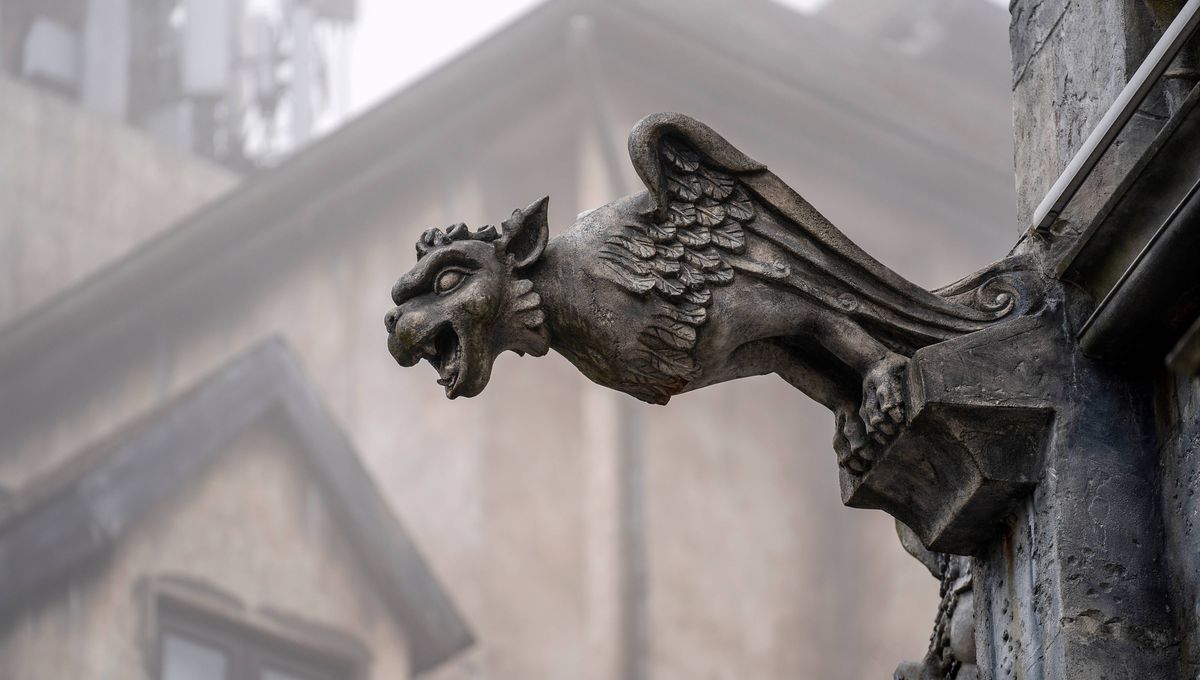
Oxford students were the most lethal and violent of all the contemporary social and professional groups in medieval Oxford, London, and York, new research suggests.
A digital mapping project led by Cambridge’s Violence Research Centre has plotted crime scene locations from three of medieval England’s largest cities. The Medieval Murder Maps project draws on 14th-century coroner inquest reports to reconstruct an image of murders and sudden deaths in these thriving medieval cities. The map also plots the location of sanctuary churches – where fugitives were meant to be immune to arrest – and medieval prisons.
During this period, coroner’s reports serve as a form of catalog for sudden or unusual deaths that were determined by a jury of local townsfolk. Although nowhere near as detailed and “objective” as today’s inquests, these documents contain information like names, locations, the nature of the events, and even the value of the murder weapons.
The data was provided by the Historic Towns Trust, which allowed the researchers to create a street atlas of 354 homicides across all three cities. According to their results, the per capita homicide rate in Oxford was about 4-5 times higher than either late medieval London or York. This is a surprisingly high figure, so what was different about this city?
Well, among the perpetrators with backgrounds identified by the coroner reports, 75 percent were “clericus”, as were 72 percent of all Oxford’s murder victims. “Clericus” most likely refers to a student or member of the university at the time.
“A medieval university city such as Oxford had a deadly mix of conditions,” Professor Manuel Eisner, murder map investigator and Director of Cambridge’s Institute of Criminology, said in a statement.
“Oxford students were all male and typically aged between 14 and 21, the peak for violence and risk-taking. These were young men freed from tight controls of family, parish or guild, and thrust into an environment full of weapons, with ample access to alehouses and sex workers.”
Importantly, in addition to the clashes between “town and gown”, as Eisner calls it, Oxford students belonged to regional fraternities called “nations” which, as with many competitive student fraternities today, were a source of conflict.
The Medieval Murder Maps platform allows users to explore and investigate patterns of violence in these key medieval cities. The site provides an interactive map that captures life (and death) at a time when cities like York were experiencing a “golden age” as they recovered from the Black Death. Dozens of the recorded inquest reports are available in audio form, so users can listen to the details of the more intriguing cases.
“When a suspected murder victim was discovered in late medieval England the coroner would be sought, and the local bailiff would assemble a jury to investigate,” Eisner explained.
“A typical jury consisted of local men of good repute. Their task was to establish the course of events by hearing witnesses, assessing any evidence, and then naming a suspect. The indictments were summarised by the coroner’s scribe.”
Standards and procedures for investigating crimes were extremely different to today. At the time, the methods used were a vague mix between detective work and rumor-hunting. Despite the emphasis on “good character” as the basis for jury selection, there were plenty of opportunities for individuals to influence decisions towards a “self-defense” verdict by creating false narratives.
“We do not have any evidence to show juries wilfully lied, but many inquests will have been a ‘best guess’ based on available information,” explained Cambridge historian and co-researcher Dr Stephanie Brown. “In many instances, it is likely the jury named the right suspect, in others it may be a case of two plus two equals five.”
According to their findings, medieval Oxford experienced a rate of around 60-75 homicides per 100,000. This is about 50 times higher than the situation in English cities today. The mix between hot-headed young men and alcohol seems to be the main cause of this propensity toward violence.
One particularly bloody event occurred in 1298, when an argument broke out between students in a high street tavern one Thursday night. A mass street brawl erupted with swords and battle-axes. Among the victims was one student called John Burel, who suffered “a mortal wound on the crown of his head, six inches long and in depth reaching to the brain.”
In another incident in 1299, a student got away with murder after he stabbed a sex worker to death before fleeing the scene. It turns out he preferred to kill the woman rather than pay what he owed her.
The cases recorded by the project also shine light on social tensions as well as responsibilities within local communities. There is sufficient evidence to show hostility between students from different regions, with violence between students from southern and northern England, as well as those from Ireland or Wales.
In addition, those among the victims of aggression were the men who attempted to “keep the king’s peace” and responded to the hue and cry that drew attention to crimes.
Eisner added, “Circumstances that frequently led to violence will be familiar to us today, such as young men with group affiliations pursuing sex and alcohol during periods of leisure on the weekends. Weapons were never far away, and male honour had to be protected.”
“Life in medieval urban centres could be rough, but it was by no means lawless. The community understood their rights and used the law when conflicts emerged. Each case provides a glimpse of the dynamics that created a burst of violence on a street in England some seven centuries ago.”
Source Link: New Digital Maps Reveal The Most Lethal Social Group In Medieval Oxford